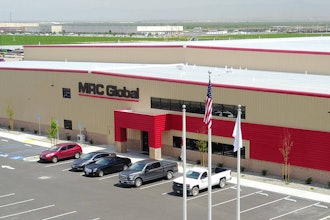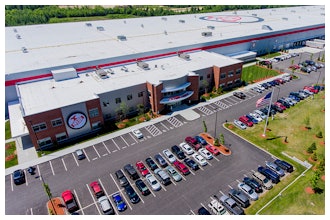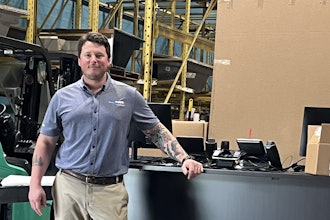
Along with heavier adoption of modern technologies and data systems comes the need to better protect information in ways that you might not have had to in the past. You likely have data and digital content that you never did before, used for more sensitive information. That also means worrying about multiple parties involved with your data stream.
In the supply chain, for example, you must have seamless security among your software and hardware, third-party vendor systems and even the tools of your contractors. Any of these systems can be the weakest link in your chain.
That makes it difficult to prepare for and manage as time goes on, and more systems and tools are adopted or implemented.
How can you better protect your supply chain with these concerns in mind? What are some common practices and solutions, especially when working with modern technologies?
1. Determine and Control Access for All Involved Parties
The more people and teams that have access, the greater the number of vulnerabilities that exist in your system. Even trusted vendors or contractors could pose a threat, without knowing it themselves. It’s your responsibility as an overseer to remain aware of which parties have access, use and read your sensitive data, or can tap into your corporate network.
For starters, you’ll want to make sure anyone with access is properly educated and trained. Human error and negligence contribute to major security flaws, as much as outside attacks. In fact, 54 percent of professionals surveyed agree that careless workers are the root cause of cybersecurity incidents.
You’ll also want to have a system or tools in place to monitor those accessing your network, to ensure everything is up to proper security procedures and protocols as per your contractual agreement. Just because they are obligated to be careful doesn’t mean they will always do so. Protect your own networks and systems first and foremost, even from the people who will be using them regularly.
2. Appropriate Contractual Language and Obligations Are a Must
All parties gaining access to your data, systems and network must be made to sign a proper contractual agreement. Before that can be done, you must put together the document using appropriate language that covers potential leaks and damage before they happen.
Every agreement should cover how vendors and parties will handle your data, what they are responsible for, and how it affects your relationship and vested assets should an attack ever occur. You don’t want to reach the point where your vendors are to blame or have their hand in the mess, yet cannot take proper action. A full 74 percent of organization managers revealed in a 2017 survey that they feel vulnerable to insider threats. That includes threats from third parties who have direct access to internal systems and tools.
It’s important that this step is carried out for everyone and anything that has access to your sensitive data, no matter how much you trust them or how long their resume is.
3. Regularly Assess Hardware and Software Vendors
Your operations are dependent on the hardware and software you employ. Therefore, it’s entirely possible that the technologies and tools you’re using are to blame for various vulnerabilities, not your human counterparts.
It means you must find a proper channel for managing supply risks and cyber vulnerabilities in relation to the tools you use, much of which will depend on the size and scale of your organization. You can do this internally by assigning a proper IT and cybersecurity team, but it’s going to take a lot of resources. You’ll want some kind of support at the ready, whether that be additional testing tools or making the choice to outsource duties entirely. Just make sure you have a process for regularly assessing and monitoring both your hardware and software solutions for current cyber risks.
4. Choose the Right Technology
The average supply chain requires a vast amount of resources and technology to remain active, including warehouse management systems, robotics, IoT sensors and devices, machine learning and remote data analytics tools. Every single one of these solutions or technologies pose their own list of vulnerabilities, so risk is an endless concern.
That’s why it’s incredibly important that you establish a risk management team within your organization that maintains your company’s best interests, the safety of all data handled and the security of your customers. Such a team can help you identify and decide the best technologies and solutions for regular operation. This not only puts you in a good position to protect your own network and system, but it also helps you comply and prepare for official cybersecurity audits.
 Megan Ray Nichols, Freelance STEM Writer
Megan Ray Nichols, Freelance STEM WriterVigilance and Consistency Are Key
Ultimately, the common practices discussed here are necessary, but they serve as a means to an end — and not a conventional end. either. Proper cybersecurity and protection means continuous development, maintenance and vigilance. Each one of these practices contributes to a seamless and well-oiled process that must never fall by the wayside.
As new technologies and applications are adopted, new vulnerabilities appear. When systems are upgraded and software updates are deployed, new risks also come flowing in. As new personnel, vendors and parties gain access to your systems, more potential issues arise. All this happens regularly, which means your security concerns are never-ending. Vigilance and consistency are key to protecting your entire supply chain.
Fall into a constant state of maintenance, monitoring and repair if you intend on protecting your data, systems, network and assets. There is no other way.
Megan Ray Nichols is a freelance STEM writer and blogger whose work has appeared on Manufacturing Business Technology, American Machinist, and IoT Evolution. Read more posts by Megan on her blog, Schooled By Science, and follow her on Twitter @nicholsrmegan.






















